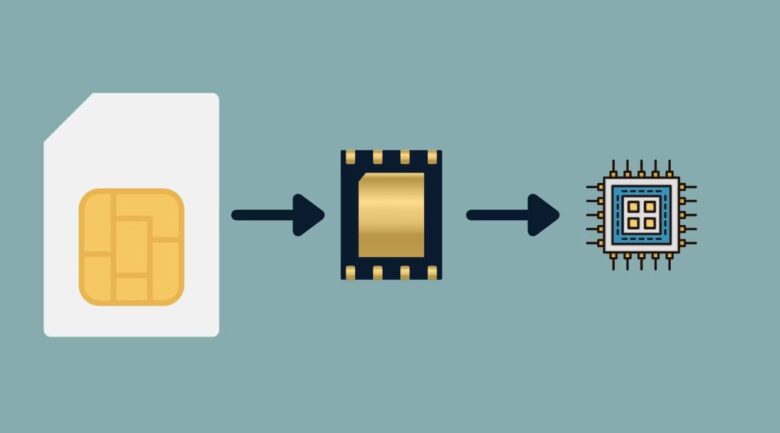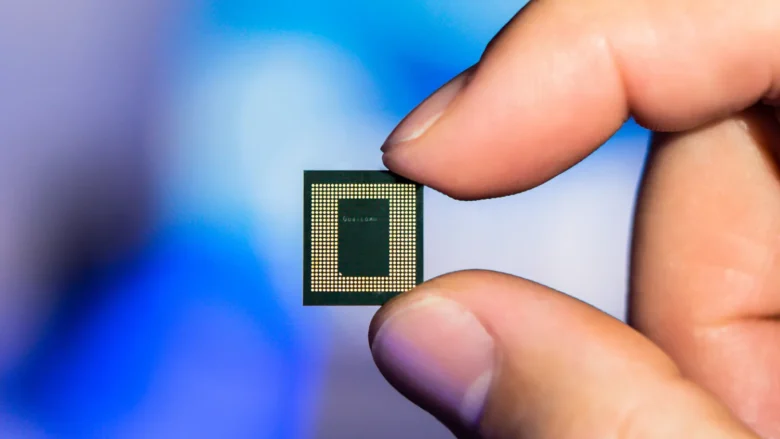For many of us, switching your phone service over to a new phone is pretty straightforward. You take the SIM card out of your old phone, pop it in your new phone, and boom, you’re better.
However, we’re starting to see more and more phones, especially at the high end, forego the physical SIM card altogether in favor of e-sims.
Key Takeaways:

- Transition to eSIM Technology: The mobile industry is witnessing a shift towards eSIMs, which are SIM chips soldered directly onto a phone’s motherboard. This move allows manufacturers to eliminate the physical SIM slot, creating more space in smartphones.
- Changing Carriers with eSIM: Switching carriers with Travel eSIMs involves obtaining a QR code or an activation code from the carrier, enabling users to make the switch seamlessly through their phone’s settings. For international travelers, apps are available to provision eSIMs based on their destination.
- Downsides of eSIM: Despite its advantages, eSIM usage has challenges. Not all carriers support eSIM, limiting options, especially when traveling abroad. Additionally, eSIMs can be more expensive than traditional physical SIM cards.
- Future Developments: iSIM (Integrated SIM): The future of SIM technology introduces iSIM, an integrated SIM that is part of a phone’s system on chip (SOC). iSIMs are significantly smaller than eSIMs, less than one square millimeter, and have the potential to conserve battery life. Qualcomm’s Snapdragon 8 Gen 2 chips offer iSIM as an option, paving the way for future adoption.
- Advantages of iSIM: iSIMs offer smaller form factors and improved battery life, making them appealing to both manufacturers and consumers. Although no phones currently utilize iSIMs, Qualcomm’s integration into their chips suggests a potential industry-wide adoption in the coming years.
- Challenges and Industry Evolution: While eSIM adoption faces challenges such as limited carrier support and higher costs, the industry is actively exploring innovative solutions like iSIM. The hope is for these advancements to enhance user options and contribute to the ongoing evolution of SIM technology in the mobile industry.
What is an eSIM?
eSIMs are essentially a SIM chip that’s soldered directly onto your phone’s motherboard. If you’re not sure exactly what a SIM card does, it contains a small amount of data that identifies you to whichever mobile network the card is meant to connect you to. This way, the mobile carrier knows that you have an active subscription and subsequently allows you access says Peter Lim from buytravelesim.com.
Of course, with the fact that space inside the typical smartphone is at a premium these days, phone manufacturers aim to get rid of the relatively large physical SIM slot and replace it with something much smaller. A standard physical nano SIM card measures about 12 by nine millimeters, but e-sims start at six by five millimeters and get even smaller from there.
How to Change Carriers with eSIM

But how exactly do you change your carrier if you can’t swap out a physical SIM? There are several ways to do this. A carrier that supports eSIM can give you a QR code, making switching services a matter of just scanning the code and changing providers in your phone’s settings. Other times, you can enter an activation code manually. If you’re traveling abroad, there are apps you can download, allowing you to pick the country you’re going to and then auto-provision an eSIM once you pay for it.
However, there’s currently a big downside to using built-in Sims, and we’ll discuss what it is shortly.
Challenges and Future Developments
Not every carrier supports eSIM, although many major carriers have started bringing in e-sim support. Your options will often be limited when traveling abroad, at least for now. So, if you want to shop for a better price or more data, as you often can when visiting the shop at your destination airport, you may end up being out of luck.
Additionally, e-sims tend to be more expensive than physical SIM cards. But regardless of the current challenges for some travelers, the future seems to be heading towards phones without traditional SIM trays.
The Future: iSIM (Integrated SIM)

There’s even a new style of internal SIM on the horizon called iSIM, where the ‘I’ stands for integrated. In contrast to the ‘i’ in iPhone, which stands for important, iSIM is actually part of the phone’s SOC or system on chip, the package where core components like the CPU, GPU, and modem live.
An iSIM is not only much smaller than an eSIM, less than one square millimeter, but it can also save on battery life. These advantages are extremely appealing to both phone manufacturers and consumers.
At the time of writing this article, there aren’t yet any phones that use an iSIM, but Qualcomm is already offering it as an option with their Snapdragon 8 Gen 2 chips. It has the same advantages as eSIM but, like eSIM, requires carriers to get on board. We’re confident that more carriers will adopt iSIM over the next few years.
Some Devices That Support eSIM Technology
Devices with eSIM Support As eSIM adoption is still in early stages, the list of devices that support this technology is limited but growing. Some notable smartphones with eSIM capability include:
- iPhone XS, iPhone XS Max, iPhone XR – These 2018 iPhone models were among the first Apple devices to include dual SIM functionality via an eSIM.
- Google Pixel 3, Pixel 3 XL, Pixel 4, Pixel 4 XL – Google’s Pixel phones have also offered eSIM support since the Pixel 3 first launched in 2018.
- Samsung Galaxy S20, S20+, S20 Ultra – Samsung’s 2020 flagship S20 series saw the introduction of eSIM support for select models.
- Motorola razr (2020 model) – The revival of the classic Motorola Razr brand in a new foldable phone format also brought eSIM compatibility.
- Surface Duo – Microsoft’s dual-screen Android device includes eSIM as part of its mobile connectivity options.
Conclusion
In conclusion, while there are challenges with eSIM adoption, the industry is moving towards innovative solutions like iSIM, which holds promise for smaller form factors and improved battery life. We hope these advancements won’t continue to limit options for consumers and look forward to the evolution of SIM technology in the mobile industry.

